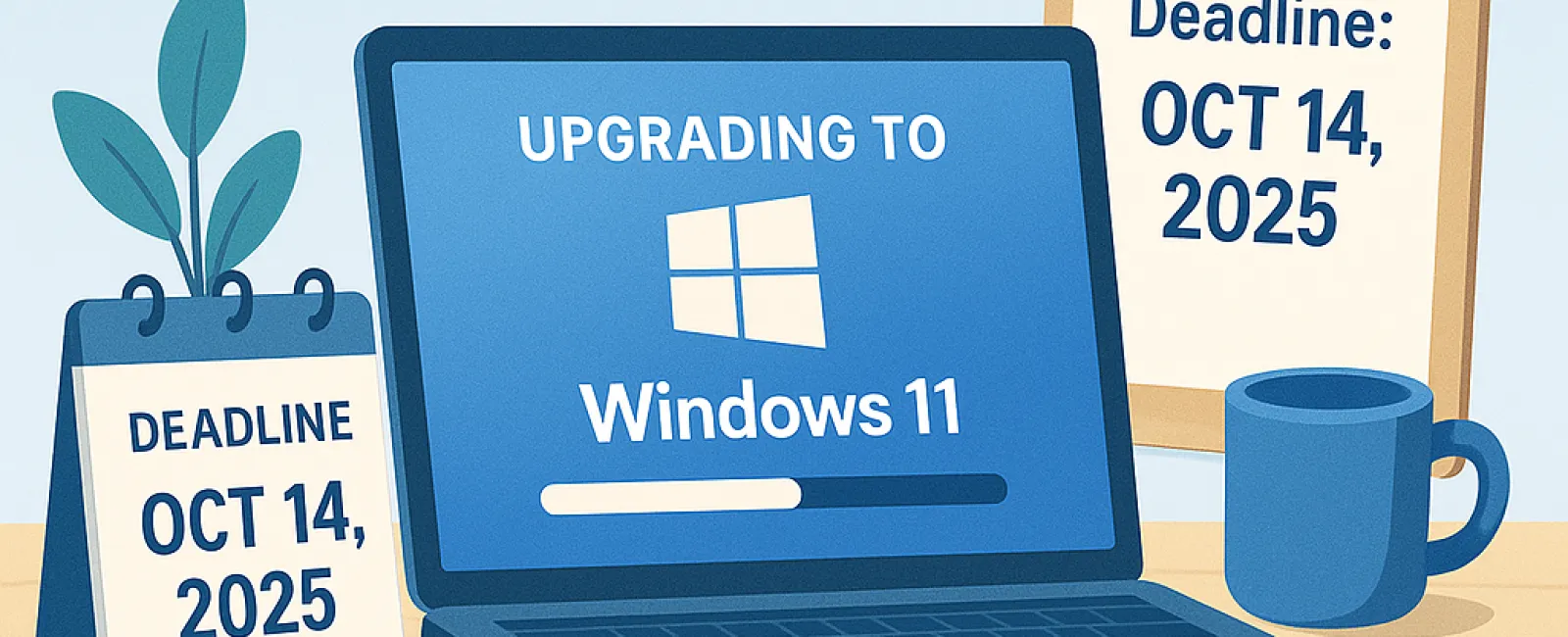June 23, 2025
If you're still using Windows 10 on your business computers, here's the situation: Support for Windows 10 ends on October 14, 2025. After that date, Microsoft will no longer provide security updates, bug fixes, or technical support. Business owners need to realize that the real cost of waiting to upgrade isn't just about eventually having to change—it's about the risks and expenses you face while waiting.
"We'll Deal With It Later" Is An Expensive Strategy
Upgrading all your machines might not feel like a fun expense, so it's tempting to delay—until something goes wrong. But procrastinating carries real costs:
1. Operating Without A Safety Net
When Microsoft stops updating Windows 10, any new security flaws become your problem. Hackers target outdated systems because they're easier to breach. It's like locking your front door but leaving the windows open. One security breach could cost thousands or even threaten your entire business.
2. Software And Hardware Compatibility Issues
Many business applications including accounting software, CRMs, and industry-specific tools are phasing out support for Windows 10. Imagine your system crashing mid-project or during a client presentation—what's that worth to you? Hardware like new printers and security devices might also stop working properly with an outdated OS.
3. Lost Productivity
Older systems are slower, crash more often, and frustrate employees. Even small slowdowns add up, reducing efficiency, morale, and your competitive edge. If each employee loses 10-15 minutes a day dealing with tech problems, that cost multiplies significantly over a month.
4. Emergency Upgrades Are Always More Expensive
Waiting until systems fail or teams get locked out forces rushed fixes, which mean: emergency hardware orders, extra IT labor costs, and interruptions while devices are replaced. Planning your upgrades early saves you money and stress later.
5. You're Risking Compliance Violations
If your business handles sensitive information or follows regulations like HIPAA or PCI-DSS, using unsupported systems could lead to fines or legal trouble. Many regulations require up-to-date security, and Windows 10 won't comply after support ends.
What Smart Business Owners Are Doing Now
They're getting ahead of the deadline by not only upgrading devices but also using this opportunity to:
- Audit which devices need replacing
- Streamline software and tools
- Strengthen cybersecurity measures
- Plan their IT budgets carefully for 2025
How To Make The Transition Smooth
Here are some recommended steps:
- Run compatibility checks—some machines can't run Windows 11 and may need replacement
- Audit your apps to ensure they work with Windows 11 or newer systems
- Budget for new hardware early to avoid supply chain delays
- Partner with an IT provider who can manage the upgrade smoothly with minimal disruption
Don't Wait Until October To Panic
Waiting until the last minute will cost you more in money, stress, and missed opportunities. We're helping small businesses upgrade the smart way: planned, seamless, and set up for future growth.
Click here or call us at 303-415-2702 to book your 15-Minute Discovery Call and we'll help you identify what
needs upgrading, what can stay and how to build a transition plan that won't
disrupt your business before the deadline.




